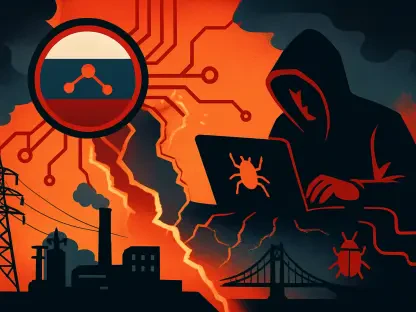In the realm of cross-border travel, efficient systems are crucial to ensuring smooth operations and maintaining the satisfaction of millions of travelers. Recently, Malaysia faced a significant hurdle with a breakdown in their autogate system, affecting numerous entry points and thousands of travelers. Today, we talk with Chloe Maraina, a business intelligence expert focused on data management. Her insights provide a comprehensive understanding of the recent events that caused chaos at the Malaysian border checkpoints.
Can you explain what led to the breakdown in the autogate system at Malaysia’s major checkpoints?
The disruption was primarily due to issues with data integration within the MyIMMS system. This caused significant delays in cross-checking processes, which are essential for the function of the autogates.
When did the autogate disruption start, and how long did it last?
The breakdown began around noon on July 18 and persisted for over 24 hours, making it one of the most severe disruptions ever experienced at these entry points.
Which specific entry points were affected by this glitch?
The glitch affected major entry points including Kuala Lumpur International Airport terminals 1 and 2, and the Customs, Immigration, and Quarantine complexes at Bagunan Sultan Iskandar and Kompleks Sultan Abu Bakar in Johor.
How did the breakdown impact foreign travelers, specifically Singaporeans?
Singaporeans, among other foreign travelers, were unable to use the autogate facilities, leading to long queues and delays. The disruption was particularly impactful given the high volume of daily commuters between Johor and Singapore.
Were Malaysian passport holders affected by the disruption? Why or why not?
Interestingly, Malaysian passport holders were not affected by the disruption because they have separate processing systems that didn’t rely on the affected data integration processes.
What measures did the Malaysian Border Control and Protection Agency (AKPS) take to manage the situation?
The AKPS swiftly activated all manual immigration counters and deployed additional personnel to mitigate congestion and facilitate the movement of travelers through other means.
Can you describe the chaos or congestion that travelers faced during this disruption?
Travelers faced significant congestion, with reports of tens of thousands queuing for hours. This caused a considerable backlog, particularly at the land crossings between Singapore and Malaysia.
How did travelers react to the delays at the checkpoints, and were there any reports of them returning to Singapore in frustration?
Many travelers were understandably frustrated, and it led to some choosing to return to Singapore rather than endure the extended wait times.
Were there any environmental conditions, such as ventilation issues, that made the waiting process more difficult for travelers?
Indeed, the conditions were made worse by poor ventilation in some areas, with travelers describing it as stuffy, which exacerbated the discomfort during long waits.
How did the AKPS communicate updates about the situation to travelers and the public?
Updates were communicated through social media platforms, like Facebook, informing travelers about the ongoing situation and advising on expected delays.
What were the experiences of individual travelers during this disruption, such as those of Ms. Jane Oh and Ms. Chelsea Teh?
Ms. Jane Oh was fortunate to clear immigration relatively quickly on her return trip, whereas Ms. Chelsea Teh reported waiting for about one and a half hours in congested, poorly ventilated conditions.
What feedback did Johor Menteri Besar Onn Hafiz Ghazi give regarding the system disruption?
The Menteri Besar expressed deep disappointment and emphasized the urgency of taking immediate action to prevent future occurrences of such disruptions.
Were any additional personnel deployed to handle the influx of visitors at the checkpoints? If so, who were they?
Yes, members of the Malaysian People’s Volunteer Corps were among those deployed to manage the large influx of visitors and ensure smoother processing.
Given the issues with the autogate system, what steps is Malaysia considering to prevent similar occurrences in the future?
Ensuring system reliability will likely involve reinforcing data management protocols and ensuring better support for technology infrastructure to avoid disruption.
How significant is traffic at the Johor-Singapore Causeway, and was there any particular impact during the disruption?
The Johor-Singapore Causeway is one of the busiest border crossings worldwide, with up to 300,000 daily users. The disruption heavily impacted this traffic flow, causing compounded delays.
What changes have been made recently regarding the use of electronic gate facilities for Singaporeans at these land checkpoints?
Recently, the allowance for Singaporeans to use the electronic gate facilities was extended to several key checkpoints, including KLIA terminals, which marked a significant step in improving cross-border travel efficiency.
Do you have any advice for our readers?
In situations like these, remaining patient and staying informed through reliable sources is crucial. Understanding that technological systems can sometimes falter highlights the importance of preparing alternative travel plans when possible.









